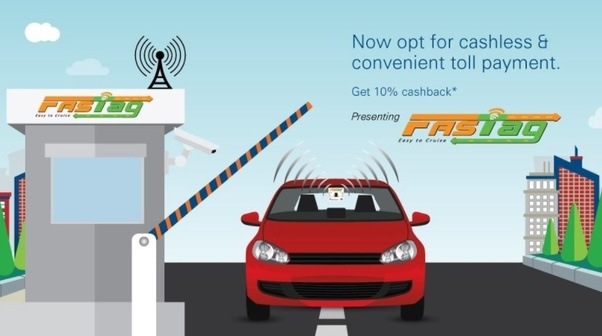-
FASTag is a radio frequency identification device that enables cashless transaction at toll plazas without stopping the vehicle at the toll plazas.
-
It employs RFID technology for making toll payments directly from the pre-paid account linked to it.
-
This system aims to remove logistic inefficiencies at toll plazas and has the potential of saving Rs 60,000 crore in terms of time and fuel bills.
-
The tag is fixed to the windscreen of a vehicle and an RFID antenna in the canopy of the toll gate scans the QR code and the tag identification number, following which the boom barrier lifts to allow a vehicle to pass through.
-
The tag, which is valid for five years, comes in seven different colours — violet, orange, yellow, green, pink, blue, black. Each colour is assigned to a particular category of vehicles.

How does it work?
-
The National Highways Authority of India (NHAI) has tied up with 20 banks to allow people to recharge their cards as well as for owners of old vehicles to purchase a FASTag.
-
The tags can also be procured from kiosks set up at toll plazas. The cost of the device varies from one bank to another but on an average a buyer pays ₹600 for the device out of which ₹200 can be used for transactions at toll booth while the balance goes towards the cost of the device and the bank’s fee.
-
The NHAI also has a mobile application for FASTag that allows users to buy and recharge these tags as well as seek information on toll rates on different routes. It also allows them to give their feedback.
-
Once the vehicle passes through a toll booth, the user receives an SMS alert regarding the charge debited to his or her account.
Benefits for the users
-
Users are refunded 5% of the total toll paid by them in a given month.
-
Users can also pass through the plaza without having to stop their vehicle to make the payment.
-
Cab operators and transporters say that the technology also allows them to track the movement of their vehicles as they receive SMS alerts.
Concerns
-
Many plazas don’t have a dedicated lane for RFID tags, which means that one still has to wait in a queue along with other vehicles which need to stop to make cash transaction.
-
At many places, RFID readers don’t work.